Adult sea bass perform well on alternative circular-economy-driven feed formulations
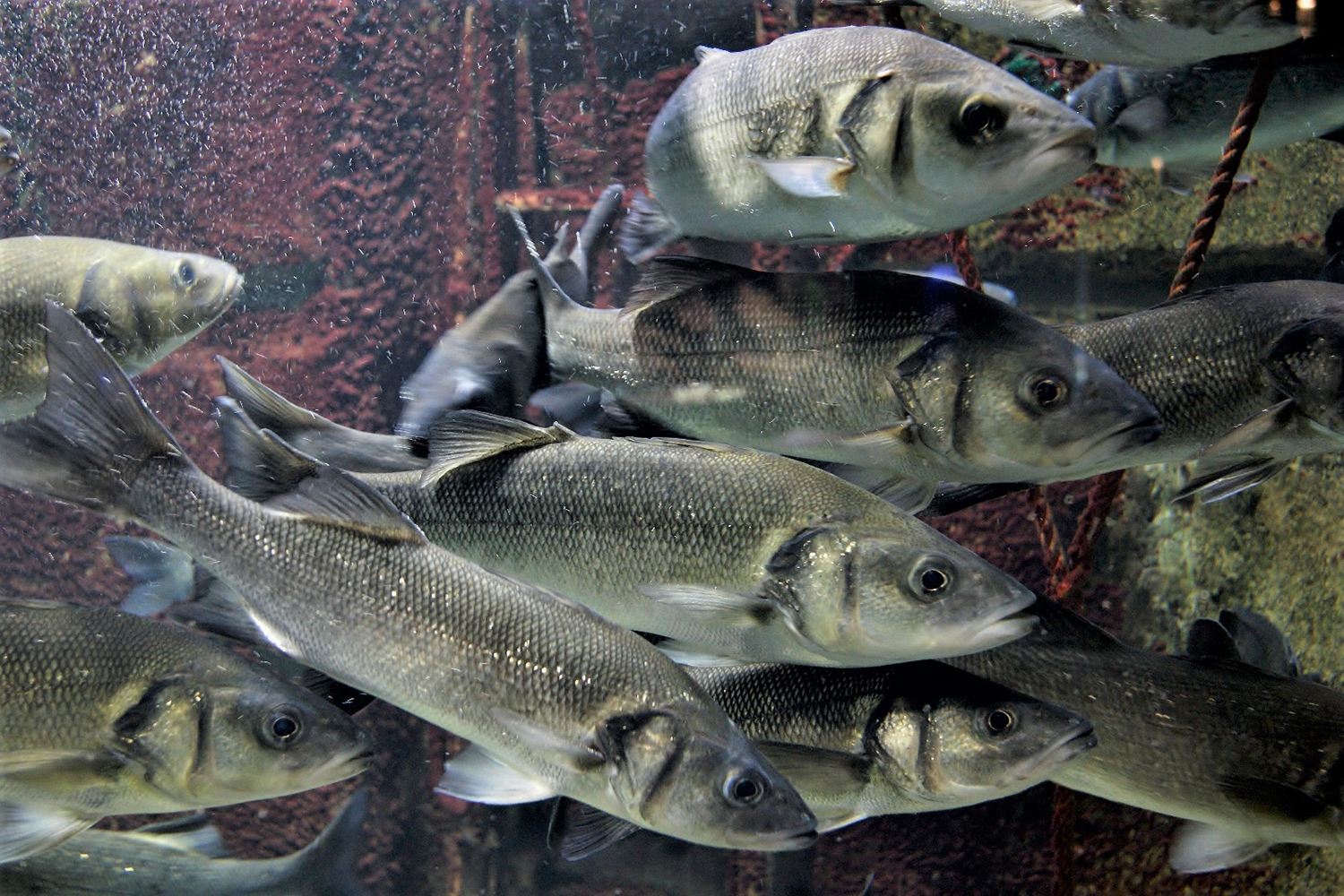
To optimize aquaculture production while improving sustainability and ensuring the nutritional status of the fish for human consumption, it is crucial to work towards high-quality, eco-friendly and affordable feed concepts. Sustainability in this paper refers to a more circular economy process that focuses on ecosystem conservation while ensuring excellent nutritional and welfare parameters for the fish. The circular economy approach is the most promising and widely used model in aquaculture. It involves the reduction and reuse of resources in production while aiming for optimization and environmental efficiency. The main sustainability issue in aquaculture is the fish in/fish out ratio, which needs to be addressed to ensure a more sustainable production while minimizing resource consumption and maximizing yield.
The definition of byproducts includes all raw materials (edible or inedible) that are left over from the production of the main product (here: seafood in general) and can be directly reused without further processing. These include waste, skins, heads, blood, and bones. In fish production, an estimated 45 percent is used as a primary product and 55 percent as a byproduct, highlighting the need to reuse these products to reduce environmental impact (carbon footprint with longer transportation distances) and improve production efficiency.
The European sea bass (Dicentrarchus labrax) is a marine fish species that is highly important in Europe for cultural as well as economic value. As a carnivorous aquaculture species, it relies on high protein feed ingredients, usually fishmeal, in the feed to ensure good health and growth performances. It is known from the literature that fishmeal in sea bass can be partially replaced by insect meal and plant and animal proteins without affecting the metabolism and/or growth.
This article – summarized from the original publication [Petereit, J. et al. 2022. Adult European Sea bass (Dicentrarchus labrax) Perform Well on Alternative Circular-Economy-Driven Feed Formulations. Sustainability 2022, 14(12), 7279] – presents the results of research focused not on a single ingredient analysis, but rather feed formulation concepts based on combinations of more sustainable ingredients to test for growth, nutritional, welfare and sensory parameters.
Study setup
Four alternative diet compositions were tested against a commercially mimicked feed recipe to offer more sustainable feed formulations for the sea bass farming industry. Feed intake, growth, feed utilization, welfare parameters, tissue composition and sensory and mineral analysis were assessed over an 83-day feeding period.
A total of 375 European sea bass kept in the recirculation aquaculture system (RAS) of the Alfred Wegener Institute Helmholtz Center for Polar and Marine Research (AWI) (Bremerhaven, Germany) were used for the feeding experiment. The fish were acclimatized within the RAS for two weeks before starting the 83-day feeding trial. Fish were individually tagged with PIT tags and afterward randomly distributed into 15 tanks (25 fish per tank) for acclimatization. The mean weight of the individuals was 320.8 ± 72.4 grams. and the mean length was measured at 30.5 ± 2.1 cm, respectively.
The experimental RAS consisted of 36 individual holding tanks, with a bottom area of one square meter and a volume of 700 liters each. For all 36 tanks, the water was treated the same, using typical RAS cleaning devices, such as a drum filter, biofilter, a protein skimmer (with ozone) and a trickling filter. For this experiment, 15 out of the 36 tanks were used to ensure a density comparable to aquaculture facilities. The rest of the tanks were used as holding tanks for the spare fish.
Based on the formulation of commercial sea bass feed, four different alternative, isonitrogenous feed concepts were produced, in addition to a control diet. All diets were extruded floating pellets with a size of 6 mm. In addition, a typical commercial diet for sea bass was mimicked for the control diet, based on analysis of commercial feed labels from different commercial suppliers and further contacts with feed formulators in the industry. The no processed animal protein (NOPAP) and NOPAP+ diets included insect meal, fermentation biomass products, and vegetable protein concentrates; the processed animal protein (PAP) diet included poultry meal, feather meal hydrolysate, porcine blood meal, insect meal and fermentation biomass products; and the PAP diet included poultry meal, feather meal hydrolysate, porcine blood meal and fishmeal. All alternative formulations contained hydrolysates from aquaculture byproducts and macroalgae.
For detailed information on the experimental design, RAS system and fish husbandry; experimental diets; measurements and sampling; and various analyses conducted, refer to the original publication.
Stirling researcher identifies range of potential uses for aquaculture byproducts
Results and discussion
The present study examined whether the replacement of fishmeal, fish oil (FO) and soy products in feed efficiency by alternative ingredients affects the performance of European sea bass. Different formulation concepts were tested including ingredients, such as processed land-animal proteins, vegetable protein concentrates, insect meal, fermentation products, macroalgae, fish protein hydrolysates from aquaculture byproducts, salmon oil and algae oil.
The literature shows that sea bass is known to have good acceptability of plant and animal-derived protein replacements at moderate levels. Our study tested whole-feed alternative formulation concepts, with the replacement of more than one ingredient at a time. In the following, the different performance aspects are considered to better interpret the general health and growth parameters, first from a physiological point of view and later from the perspective of the consumer and/or farmer. The distinction between aquaculture candidate and farmer is critical here, as the farmer has to consider the best aspects for the welfare of the fish as well, while, on the other side, being economically feasible. For the consumer, it is the sensory analysis, as well as food safety in terms of toxic elements and healthy fatty acids.
We examined the effect on growth and feed performances, and no significant differences were found in total feed intake, feed conversion ratio (FCR), condition factor (CF), or final body weight for all different diets. In contrast, the relative growth rate was significantly higher in the control-fed fish (0.52 percent per day) than in all other diets (0.45–0.48 percent per day). The same could be seen for the weight gain, which was significantly higher in the control and PAP-fed fish compared to the other diets. The significant weight gain but insignificant final weights can be explained by the high variability in the initial weights.
Comparing the different feed concepts and growth parameters, we see that the control and PAP-fed fish had the best performance, closely followed by the NOPAP+ and NOPAP-fed fish, and PAP-fed fish with the lowest performance. Overall, these results indicate that the control diet can be exchanged for one of the more sustainable alternative diets (PAP or NOPAP) with no adverse effect on growth. This is in line with other studies investigating European sea bass using less radical alternative formulations.
The whole-body composition of the fish did not show significant differences in moisture and ash between the control and alternative diets and is congruent with the recent literature. Crude fat (here: 15.45–16.47 mg/kg) is well within the normal range for European sea bass (7–21 mg/kg) and does not significantly differ between the different feed concepts. Crude protein is significantly higher between the NOPAP-fed fish (18.57 mg/kg) and the other feed concepts (17.75–18.03 mg/kg) but still well within the range of the literature (15–22 mg/kg).
The protein efficiency ratio (PER) range of 1.35–1.56 is well within the range described by the literature and shows a good ratio within all experimental and control-fed fish. Higher lipid levels in the diet are already known to improve feed efficiency and PER. Fish that obtained the highest PER in this study were fed the commercial and NOPAP diet, with lipid levels of 22.2 percent and 21.8 percent. The literature shows a decrease in PER in sea bass with increasing dietary protein beyond the optimum level. This can be observed in the PER of the PAP and NOPAP+-fed fish, which had crude fat levels of 39 percent and 41 percent.
These findings are congruent with the literature that shows no body compositional decrease by plant- and terrestrial-animal-derived protein replacements of up to 30 percent. The conversion factor used in this study was an estimate for all diets. In an experimental design, such as the one described here, with feed concepts rather than individual ingredients, the exact conversion factor calculation is complex and not feasible for the farmers. That is why we determined the factor nutritionally, which gives a good overview of the respective concepts. Therefore, it was concluded that the applied alternative feed concepts do not negatively affect the biochemical composition of sea bass.
The welfare status is a very complex system, and many factors need to be considered to understand the picture entirely. For the NOPAP+ diet, we can see a lower value on protein content in the plasma, but none of the other measured parameters indicate poor welfare. This concludes that welfare is not necessarily negatively affected in NOPAP+-fed fish. The lower values in the total protein in the plasma are more likely explained by the fact that too much protein content in the feed leads to less protein efficiency, as can be proven by the low PER in NOPAP+-fed fish. The sustainable alternative diets, PAP and NOPAP, induced no significant differences in the blood parameters and can, thus, be considered to provide a similar welfare status of the fish when exchanged for the less sustainable control diet.
When looking at the welfare status of fish, it is crucial to take highly unsaturated fatty acids (HUFAs) into account, which are mainly responsible for the metabolism of fish and generate growth and immune function. Furthermore, especially in farmed animals, higher stress is given due to handling, densities, and transportation, which make the health status of fish even more essential, and amino acid need to be considered a critical welfare category. Values for all fatty acids were within the range of European sea bass and showed no significant differences for any fatty acids, except the oleic acid, compared to the control-fed fish vs. alternative diet-fed fish.
Overall, the welfare parameters are not negatively affected when the control diet is replaced by one of the more sustainable feed concepts with processed animal (PAP) or plant proteins (NOPAP). The exchange of commercial FM with more sustainable, recycled fish hydrolysates from aquaculture byproducts additionally does not show any negative effect on fish welfare. This supports the hypothesis that the alternative feed concepts presented here can replace the less sustainable commercial feeds.
Results for sensory analysis showed that in the fish fed NOPAP+, the fillet yield was higher, with a mean value of 41.2 percent, probably because NOPAP+ was enriched with Super Prime fishmeal and krill meal, which are known to produce better growth characteristics. Interestingly, the alternative diets, PAP (39 percent) and NOPAP (38 percent), indicate no significant differences to the control-diet-fed fish (38 percent), resulting in the conclusion that the alternative formulation concepts do not negatively affect the fillet yield.
Sensory attributes are the most crucial factor for consumers, and the results of this study indicate that the control diet can be replaced by more sustainable alternatives (PAP and NOPAP) without affecting sensory attributes. According to the literature, softness, juice separation, taste, and smell are the most relevant attributes for consumers. In our study, those attributes were not affected by alternative-diet-fed fish, in accordance with the recent literature for sea bass (D. labrax), greater amberjack (Seriola dumerili) and gilthead sea bream (Sparus aurata).
The health benefits of fish from recirculation systems are apparent. This study shows that the values for fatty acids and the low toxic elements could encourage consumers to buy more fish. In addition, this health advantage of fish products does not fall in favor of a negative correlation between taste or consistency. This can be seen as a success for the effort to develop alternative and more sustainable feed concepts without losing sensory attributes. From an ecological point of view, the introduction of sustainable feeds is essential, but the economic difference between feeds should also be considered.
The most crucial factor in selecting new feed is to calculate the costs right from the beginning to the farm. Our study tested four different feed concepts that could potentially replace the commercial feed for sea bass. However, the raw materials used here were selected on an experimental basis, making estimating costs impossible due to excessive imprecision. Byproducts from the circular economy and artificially enriched algae were utilized for the sustainable ingredients in our diets. These are currently only used on a scientific basis and not commercially so that no realistic cost assumptions can be calculated. For the future, it would, therefore, be essential to make the byproducts (such as fish hydrolysates from aquacultures) as well as enriched algae for fish feed available for commercial use.
Sea bass hatchery feeds artemia substitute to increase production, stability
Perspectives
The results of our study show that alternative diets using emerging and novel plant and animal-derived protein sources (both terrestrial and aquaculture byproducts) have comparable performance to current commercial sea bass feeds while being more sustainable. The fish welfare and sensory quality, which seem to be the strongest drivers for consumer appreciation, were not negatively affected by more sustainable feed concepts in which fishmeal, fish oil and soy products were replaced by several alternative ingredients (NOPAP and PAP). Furthermore, the PAP and NOPAP diets additionally had these traditional ingredients replaced by agro-industry, fisheries and aquaculture byproducts, to get into the direction of circular economies.
The usage of aquaculture byproducts in comparison to commercial fishmeal has far less transportation distances (as it is usually reused at the same site) and additionally recycles the resources at hand, which makes the overall production more eco-friendly. Therefore, this study provides evidence that alternative diets can successfully replace commercial diets for European sea bass. The transfer to more sustainable diets would positively affect the consumers’ attitude toward farmed fish (better sustainability with the same welfare and sensory status) and the fish farmers’ potential for further sustainable and circular-economy-driven industrial growth.
The recommendation for future feed formulations for farmed European sea bass would be to replace the fishmeal completely with hydrolysates, exchange the SBM with more sustainable plants, such as wheat and enriched algae, and add agriculture byproducts, such as feather meal and others, for a better mineral composition and digestibility.
Now that you've reached the end of the article ...
… please consider supporting GSA’s mission to advance responsible seafood practices through education, advocacy and third-party assurances. The Advocate aims to document the evolution of responsible seafood practices and share the expansive knowledge of our vast network of contributors.
By becoming a Global Seafood Alliance member, you’re ensuring that all of the pre-competitive work we do through member benefits, resources and events can continue. Individual membership costs just $50 a year.
Not a GSA member? Join us.
Author
-
Dr. Jessica Petereit
Corresponding author
Alfred Wegener Institute Helmholtz Centre for Polar and Marine Research, Am Handelshafen 12, 27570 Bremerhaven, Germany
Tagged With
Related Posts
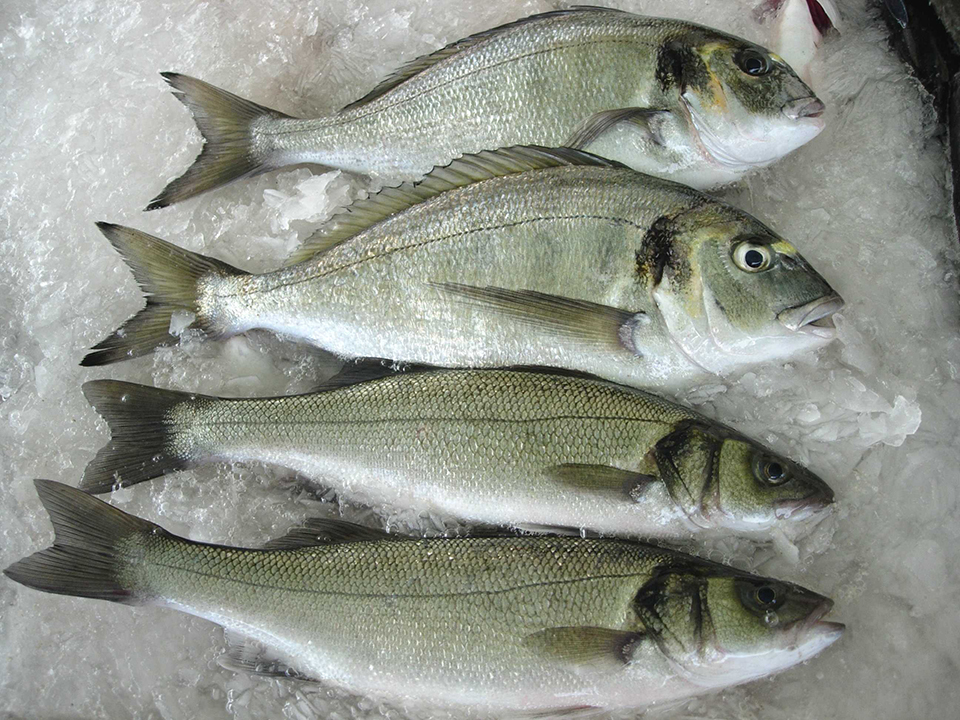
Health & Welfare
A quality project for sea bream, sea bass
In trials, finishing diets improved the appearance of sea bass and sea bream with equivalent or higher performance than that achieved with standard grow-out diets.
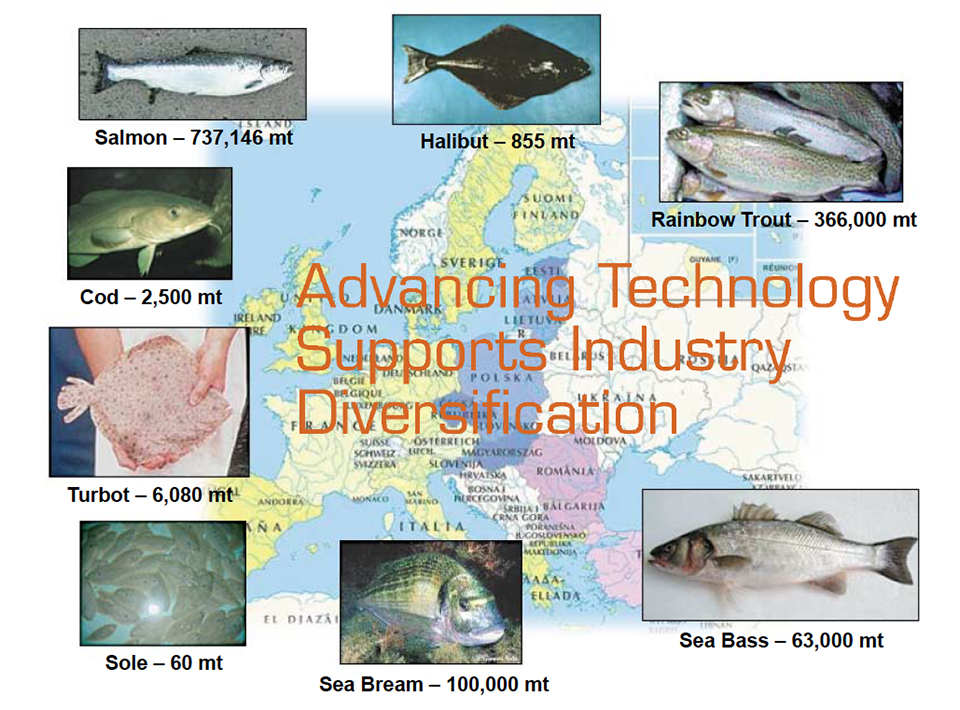
Intelligence
A review of European marine finfish hatcheries
As European aquaculture continues to diversify in the marine fish sector, technology advances and methodology in marine finfish hatcheries are proving vital.
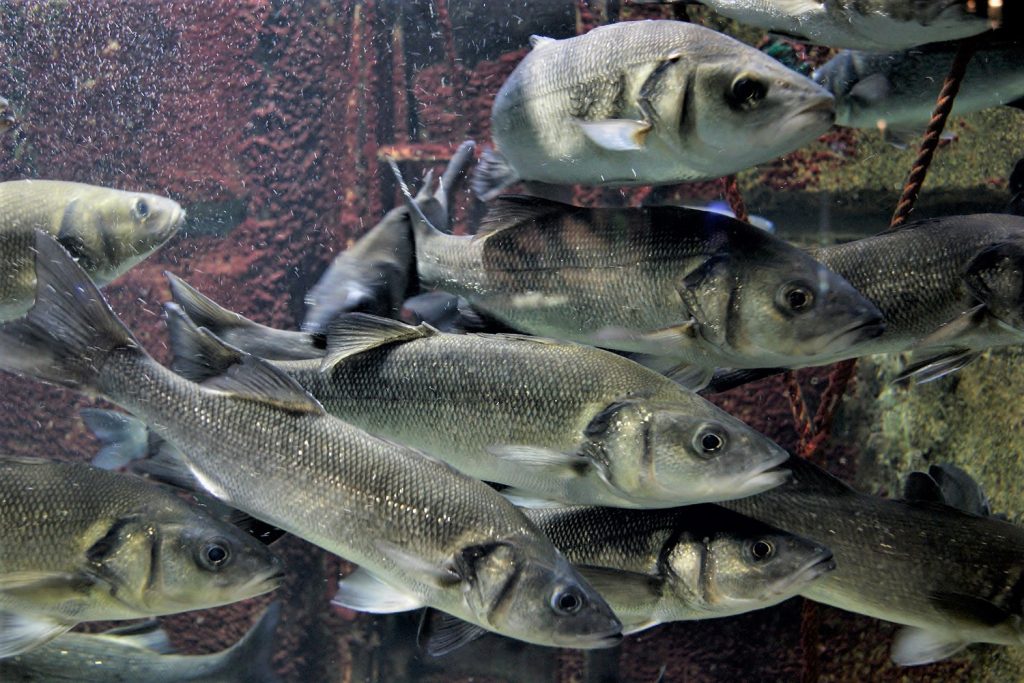
Aquafeeds
Evaluation of a commercial microbial enhanced protein in European sea bass diets
As a protein source and fishmeal replacement in European sea bass diets, a microbial enhanced protein demonstrates cost effectiveness and other benefits.
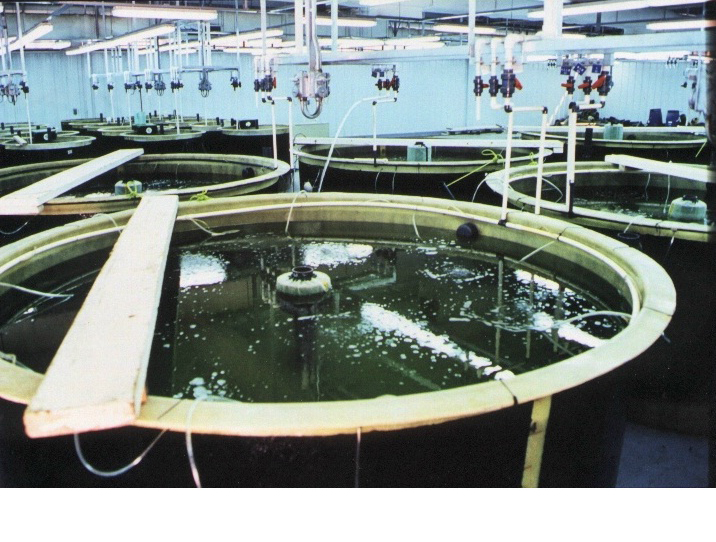
Health & Welfare
Larval rearing of sea bass in desert-saline Middle East
European sea bass have been raised in the favorable climate of the Middle East since 2000. For effective larval rearing of sea bass, the authors recommend the use of temperature-controlled water with about 35 ppt salinity and good aeration in tanks.



